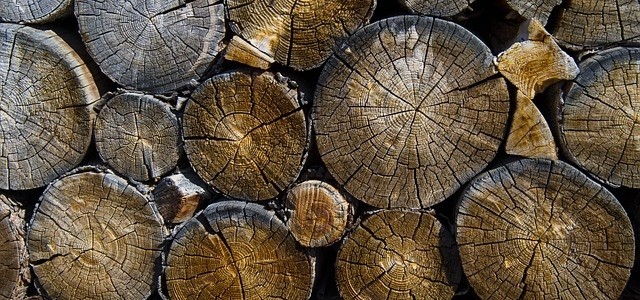Timber has played a key role in the construction industry for many years. And while it’s always been a popular material, the process of how and where it arrives from is often overlooked.
In this guide, we’ll take you through the journey of timber – how it travels from the forest and arrives in your builders merchant, ready for you to embark on your next project.

Stage One: Felling
The first stage of preparing the timber for commercial use is called ‘felling’ – the process of downing individual trees. In this case, the person cutting the tree is called the ‘feller’ – while the harvesting machine is referred to as a ‘feller buncher’.
A forestry worker will determine when and which trees should be cut down, depending on when they reach their economically ‘mature’ stages. Trees can range from 40 to 150 years old before they stop growing vigorously and are ready to be cut down. The differences in age at felling can depend on the tree species. For example, conifers grow at a much quicker rate than broad-leaved species. Environmental factors, such as soil nutrients, can also affect their growth.
Felling is normally carried out in winter, because the trees usually have less moisture content in them, compared to summer months, where they can have more than fifty percent water content.
Finally, felled trees should be replaced with saplings so that the forest has a chance to grow once again, providing a sustainable resource for future generations.
Stage Two: Storing/ Transporting
Next, the logs are stored in a clearing or in the forest until they are needed at the sawmill. This also allows some of the ‘free’ water content to evaporate, reducing the weight of the tree/log, which will result in lowering the cost of transporting and handling.
The trees are usually cut into smaller lengths on-site and then picked up by a timber lorry, which transports the timber to a processing site, such as a sawmill, paper mill, pallet, fencing or construction producer.

Stage Three: On Site
At the chosen site, the logs are debarked and bucked, or cut to the required length. Then they are cut into boards, using equipment such as circular saws and bandsaws. This is called ‘conversion’. The first stage of conversion is a process called ‘breaking down’ – which means rough sawing. The second stage is called ‘re-sawing’ and refers to more precise cutting and finishing, such as planing and further machining.
Two types of rough sawing can be used in the breaking down process – through sawn and quarter sawn.
The ends of each log is trimmed to ensure they are straight and cut into boards. Large circular saws are then used to further-process the boards, removing the curved edges. Each processed piece of wood now looks like a board.
Stage Four: Seasoning
Seasoning of natural wood is the process of removing excess water/moisture content. When a tree is felled, it still contains a large proportion of water/moisture – usually between forty to fifty per cent water content.
Water is held inside a tree in two ways:
- Free Water: Water that is held in the vessels and cells in order to distribute nutrients inside the tree.
- Cell water: Also known as ‘bound’ water, is an essential part of the tree’s cell walls.
During the seasoning process, a tree loses its free water and a high proportion of its cell water and as a result, is less likely to warp or deform.
Wood that has not been seasoned and still has a high water content is called ‘green wood’ and can be more difficult to work with because it has a tendency to change shape.
Stage Five: Preparing for Market
After turning trees into timber through saw milling, covered in stage three – also referred to as primary processing, the market value of timber can be further increased through manufacturing sawn timber products – called secondary processing. This involves the wood being made (either by man or machine) into a more refined product, such as a door, window or furniture, made to the specific size and dimensions
At this stage any preferred treatments to timber such as fire or rot resistance is added. Treated timber in sawn form is used either directly in construction or to prepare construction components, such as timber frame panels. Planed joinery components, on the other hand, are usually treated after assembly.
Finally, once all modifications are made, the timber is ready to be shipped to market.
Questions?
If you’ve got any questions about the journey of timber, or simply want to discuss anything further, be sure to give us a shout on Twitter – we’d love to hear what you have to say.
And if you’re looking for sustainable building materials for an upcoming project, don’t hesitate to check out our diverse range today.
